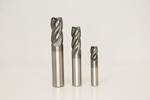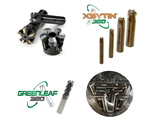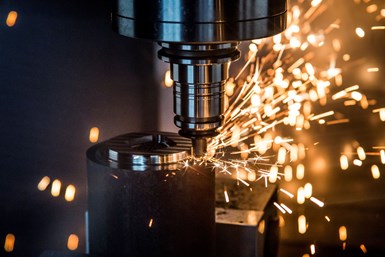Solid Ceramic End Mills Provide High Metal Removal Rates
Greenleaf Xsytin-360 end mills provide high material removal rates and result in increased productivity on a wide range of materials.
Greenleaf Corp. highlights its Xsytin-360 end mills — a cutting tool that combines the company’s phase-toughened Xsytin-1 substrate with a specialized cutting geometry that is said to offer 10X higher productivity. The strength of the material enables the user to apply chip loads similar to solid carbide end mills with higher speeds common to ceramic machining. These new ceramic end mills provide increases in productivity over current solid carbide or ceramic products.
Greenleaf says its Xsytin-1 material is engineered to machine a wider variety of materials than any other ceramic in the industry. The structure of this phase-toughened ceramic exhibits high wear resistance and improved thermal shock resistance, which makes the Xsytin-360 end mills highly predictable, versatile, high-performance products.
Xsytin-360 end mills provide high material removal rates and result in increased productivity on a wide range of materials. These end mills are effective at machining a variety of materials, including high-temperature alloys, 3D-printed sintered high-temperature alloys, hardened steels, ductile cast irons and compacted graphite iron (CGI). In hardened steels, the tool life of Xsytin-360 end mills has proven to be equal to high-performance carbide end mills when run at high-end speeds (11,460 rpm), while also removing more than 73 in3 (over 1,200 cm3) of material. Xsytin-360 end mills are ideally suited for machining materials in the aerospace, automotive, mold and die and power generation industries.
Related Content
-
Moldmakers Deserve a Total Production Solution
Stability, spindle speed and software are essential consideration for your moldmaking machine tool.
-
Machining Center Spindles: What You Need to Know
Why and how to research spindle technology before purchasing a machining center.
-
The Secrets to Hard Milling Success
The Secrets to Hard Milling Success











.png;maxWidth=300;quality=90)

